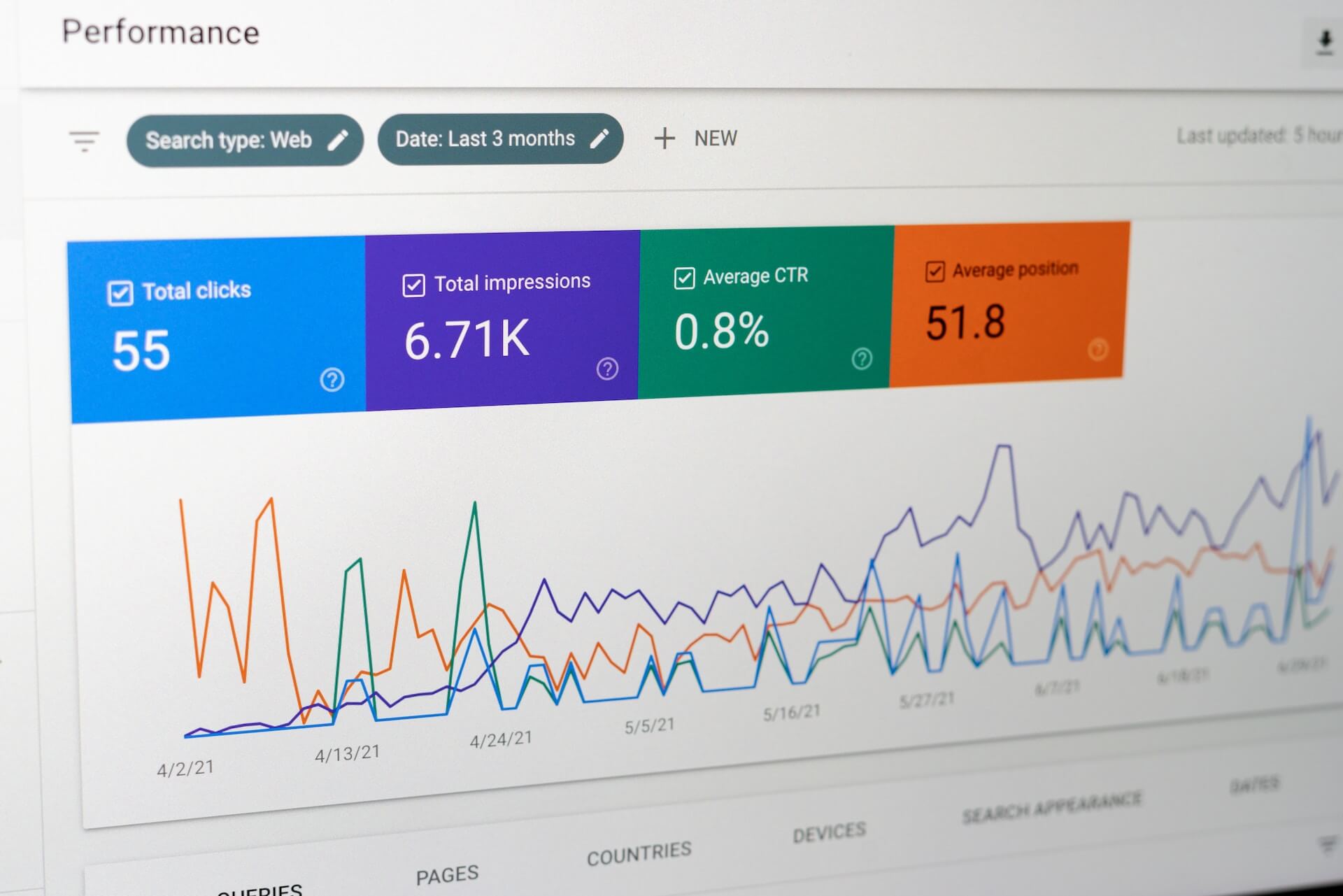As someone who is passionate about blogging, I understand the importance of positioning your blog for success. With the ever-growing number of blogs out there, it’s crucial to stand out from the crowd and attract a loyal audience.
In this blog post, I will share strategies and tips that can help you position your blog for success in today’s competitive digital landscape.
Positioning your blog for success requires implementing effective strategies and tips. By understanding your target audience, creating valuable content, optimizing for search engines, promoting your blog effectively, building relationships with readers, and monitoring performance, you can achieve your blogging goals.
Here are the key takeaways:
- Understand your target audience and their needs to create valuable content.
- Optimize your blog for search engines by conducting keyword research and implementing on-page optimization techniques.
- Promote your blog through social media marketing and engaging with online communities.
- Build strong relationships with your readers by establishing trust, personalizing content, and engaging in conversations.
- Monitor key metrics such as website traffic, top pages, channels and referrals, conversion rates, and social media engagement.
- Continuously improve your blog by staying updated on industry trends and adjusting your strategies based on performance analysis.
The Importance of Positioning Your Blog for Success
Positioning your blog effectively is essential for gaining visibility, increasing traffic, and establishing yourself as an authority in your niche. Here are some key reasons why positioning your blog for success is crucial:
- Attracting the Right Audience: By positioning your blog strategically, you can target a specific audience that aligns with your content and goals. This helps attract readers who are genuinely interested in what you have to offer, leading to higher engagement and a more dedicated following.
- Increasing Traffic: Positioning your blog effectively can improve your search engine rankings and increase organic traffic to your site. Using targeted keywords, optimizing your content for SEO, and implementing link-building strategies can all contribute to higher visibility and traffic.
- Building Trust and Credibility: Positioning your blog as a reliable source of valuable information can help build trust and credibility with your audience. Consistently delivering quality content and establishing yourself as an expert in your field will make readers more likely to trust your recommendations and turn to you for guidance.
- Monetization Opportunities: A well-positioned blog has the potential to attract lucrative partnerships, sponsorships, and advertising opportunities. Brands and businesses are more likely to collaborate with blogs that have a strong positioning and a relevant audience that aligns with their target market.
To position your blog for success, it’s important to understand your target audience, define your unique value proposition, and create high-quality content that meets their needs.
By implementing effective SEO strategies, building a strong online presence, and continuously engaging with your audience, you can position your blog for long-term success and growth.
Define Your Target Audience
As a blogger, understanding your target audience is crucial for positioning your blog for success. By identifying your ideal readership and understanding their needs and interests, you can create valuable content that resonates with them.
This will not only increase engagement and loyalty but also attract the right audience to your blog. Here are some strategies and tips to help you define your target audience effectively.
Identifying Your Ideal Readership
To define your target audience, start by analyzing your current customer base and conducting client interviews. This will give you insights into the demographics, interests, and preferences of your existing readers.
You can also research industry trends and study your competitors to understand who they are targeting and how they are reaching their audience. Creating personas based on data and surveys can help you paint a clear picture of your target consumers and their needs.
Understanding Your Audience’s Needs and Interests
Once you have identified your target audience, it’s crucial to delve deeper and understand their needs, pain points, and interests. Engage directly with your audience through comment sections, social media, and surveys to gather insights and feedback.
This will help you create valuable content that addresses their specific challenges and provides solutions. By knowing where your target audience spends their time online, you can promote your content on the platforms they prefer, increasing your blog’s visibility and attracting the right readers.
Creating a strong connection with your target audience and delivering content that resonates with them is the key to positioning your blog for success. By defining your target audience, understanding their needs, and tailoring your content accordingly, you can attract and engage the right readers, building a loyal following and driving the success of your blog.
Develop a Unique Value Proposition
Positioning your blog for success requires a unique value proposition that sets it apart from other blogs in the crowded online space. To do this, you need to find your blog’s unique selling point (USP) that differentiates it from the competition and appeals to your target audience.
The key is to provide a clear statement that explains the benefits of your blog, how it solves readers’ problems, and why they should choose your content over others. Here are some strategies and tips to help you develop a compelling value proposition for your blog:
- Focus on the right audience: Not everyone will find your blog appealing, so it’s important to identify your target audience and tailor your content to their specific needs and interests. Consider creating buyer personas to better understand your ideal readers and deliver content that caters to their wants and preferences.
- Highlight your unique offerings: Take a closer look at your blog’s products or services and determine what makes them stand out. It could be the topics you cover, the writing style you use, or the added value you provide through visuals or interactive elements. Showcase these unique offerings in your value proposition to attract and engage readers.
- Solve readers’ problems: Your blog should address and solve your readers’ challenges and pain points. Identify the problems your target audience faces and position your blog as the go-to resource that provides useful and actionable solutions. Clearly communicate how your content can benefit readers and help them overcome their specific challenges.
Setting Yourself Apart from Other Blogs
In a sea of blogs, it’s crucial to set yourself apart and stand out. Consider these strategies to differentiate your blog from the competition:
- Find your niche: Identify a specific niche or topic that aligns with your expertise and passion. By focusing on a niche, you can become an authority and go-to resource in that area, attracting a dedicated audience that values your expertise.
- Offer unique perspectives: Provide fresh and unique perspectives on topics within your niche. Don’t simply regurgitate information that’s already available elsewhere. Offer new insights, research, or personal experiences that add value and distinguish your blog from others.
- Deliver high-quality content: Ensure that your blog consistently delivers high-quality content that is well-researched, informative, and engaging. Invest time in improving your writing skills, conducting thorough research, and presenting information in a visually appealing and organized manner.
Finding Your Blog’s Unique Selling Point
To find your blog’s unique selling point, consider these tips:
- Conduct competitive analysis: Research other blogs in your niche to identify their strengths and weaknesses. Look for gaps in the market that you can fill with your unique offerings. Differentiate yourself by offering something that competitors are missing or by delivering it in a more effective or innovative way.
- Listen to your audience: Engage with your readers, listen to their feedback, and understand their needs. Pay attention to their comments, suggestions, and questions to identify what they value most in a blog. Use this information to refine your USP and ensure that it aligns with your audience’s preferences.
- Continuously innovate: Don’t be afraid to evolve and adapt your blog over time. Stay up to date with industry trends, experiment with new formats or technologies, and find creative ways to engage your audience. By continuously innovating, you can keep your blog fresh and relevant, attracting and retaining readers who appreciate your unique approach.
In summary, positioning your blog for success requires a strong and distinctive value proposition that sets it apart from the competition. By developing a unique selling point, understanding your target audience, and delivering high-quality content that addresses their needs, your blog can attract and engage readers, ultimately increasing its chances of success.
Craft High-Quality Content
Positioning your blog for success requires a focus on creating high-quality content that engages and resonates with your audience. Quality content not only attracts users and converts them into customers but also improves your brand reputation and establishes you as an industry expert. It’s essential to understand your audience’s needs and provide relevant solutions through valuable blog posts.
The Role of Quality Content in Blog Success
Quality content plays a pivotal role in driving business outcomes such as sales and leads. By addressing and solving your customers’ problems, you establish yourself as a trusted source of information in your industry. Understanding search intent and crafting content that aligns with your audience’s queries and expectations is vital for ranking well in search engines.
Creating Engaging and Valuable Posts
To create engaging and valuable blog posts, it’s crucial to perform audience research and gather insights from customer-facing teams. By understanding your audience’s goals and preferences, you can curate content that meets their needs. Conducting market research and analyzing your competitors can also provide ideas and ensure your content stands out.
Here are some strategies for crafting high-quality blog posts:
- Address your audience’s problems and provide solutions.
- Perform keyword research to optimize your content for search engines.
- Involve subject matter experts to add depth and authenticity to your posts.
- Use different content formats, such as videos, infographics, and podcasts, to cater to different preferences.
- Follow E-E-A-T (Experience, Expertise, Authoritativeness, Trustworthiness) guidelines for industries affected by E-E-A-T principles.
- Engage with your audience through comments, social media, and email newsletters.
Crafting high-quality content takes time and effort, but it is instrumental in positioning your blog for success. By focusing on providing value and meeting your audience’s needs, you can build a strong readership and drive business growth.
For more information on creating quality content, check out this content strategy guide on Wikipedia.
Optimize for Search Engines
In order to position your blog for success, it’s crucial to optimize it for search engines. This means understanding the basics of SEO and implementing key strategies to improve your blog’s visibility and ranking in search results.
Here are some essential tips and techniques to help you optimize your blog for search engines:
Understanding SEO Basics for Bloggers
To start optimizing your blog for search engines, it’s important to understand the basics of SEO. This includes understanding how search engines like Google determine ranking factors and what you can do to improve your blog’s visibility.
Key aspects to focus on include creating relevant and high-quality content, optimizing your blog’s structure and navigation, and building high-quality backlinks.
Implementing Keyword Research and On-Page Optimization Techniques
Keyword research is a critical part of SEO for bloggers. By identifying the keywords that your target audience is using to search for content, you can optimize your blog posts to rank higher in search results. Incorporate these keywords strategically in your blog titles, headings, and throughout the content to increase your chances of ranking well.
Additionally, implementing on-page optimization techniques such as optimizing meta tags, using descriptive URLs, and optimizing images can further enhance your blog’s visibility in search engines.
Remember, SEO is an ongoing process, so it’s important to regularly monitor your blog’s performance, track keyword rankings, and make adjustments as needed. By consistently optimizing your blog for search engines, you’ll increase its chances of success and attract more organic traffic.
Promote Your Blog Effectively
When it comes to positioning your blog for success, effective promotion is key. Utilizing social media marketing and engaging with online communities and influencers can help you reach a wider audience and drive more traffic to your blog. Here are some strategies and tips to help you promote your blog effectively:
Utilizing Social Media Marketing for Blog Promotion
1. Promote the blog to your newsletter subscribers: Leverage your existing audience and engage your email subscribers by promoting your blog posts through newsletters. Include teaser content and outline the value your post offers to entice readers to click through.
2. Share the blog post on social media channels: Take advantage of your blog and business’s social media profiles to share your blog content. Get creative with your posts, using storytelling and personal experiences to connect with your audience and generate curiosity.
3. Promote your blog on forums and online communities: Engage with relevant online communities and forums, but be mindful of community rules. Build trust and credibility by becoming a regular contributor, offering value upfront, and subtly including your blog links.
Engaging with Online Communities and Influencers
4. Guest posting on high authority sites: Submit guest posts to reputable websites and blogs to gain exposure, backlinks, and referral traffic. Craft a compelling pitch to stand out and provide valuable content to the site’s audience.
5. Answer related questions on Quora: Be an active participant on Quora, providing helpful answers to questions related to your blog topic. Include a link to your blog post where appropriate, offering additional insights and resources.
6. Share with any blogs/brands mentioned in the post: Reach out to other bloggers or brands mentioned in your blog post. Compliment their work and build relationships by sharing your post and asking for their thoughts or feedback. This can lead to content resharing and long-term collaborations.
To position your blog for success, it’s crucial to implement these strategies while maintaining a focus on providing valuable and engaging content. By effectively promoting your blog, you can increase your readership and establish yourself as an authority in your niche.
Build Relationships with Readers
As a blogger, it is essential to build strong relationships with your readers in order to position your blog for success. By establishing trust and connection with your audience, you can create a loyal following and increase engagement. Here are some strategies and tips to help you build relationships with your readers:
Establishing Trust and Connection with Your Audience
- Know Your Audience: Take the time to understand your target audience by creating reader personas. Conduct market research, surveys, and interviews to gather insights about their needs, preferences, and interests.
- Personalize Your Content: Tailor your blog posts to resonate with your readers. Use the language, tone, and style that your audience relates to. Address their pain points, answer their questions, and provide valuable information that is relevant to them.
- Be Authentic: Show your authentic self in your writing. Share personal stories, opinions, and experiences that your readers can relate to. Being genuine and transparent will help you establish a deeper connection with your audience.
- Engage with Your Readers: Encourage your readers to leave comments, ask questions, and share their thoughts on your blog posts. Respond to their comments and engage in conversations to show that you value their input and appreciate their presence.
- Build an Email List: Offer your readers the opportunity to subscribe to your blog through an opt-in form. Provide valuable content and exclusive offers to your subscribers to keep them engaged and interested in your blog.
- Social Media Presence: Use social media platforms to connect with your readers. Share your blog posts, interact with your audience, and participate in relevant conversations. Building a strong social media presence will help you reach a wider audience and enhance your brand.
By implementing these strategies and tips, you can position your blog for success by building strong relationships with your readers. Remember, successful blogging goes beyond creating great content; it’s about connecting with your audience and creating a community.
Monitor and Analyze Performance
As a full-time blogger, achieving blog success is your main goal. To position your blog for success, it’s crucial to monitor and analyze key metrics. By tracking these metrics, you can measure the effectiveness of your content and make informed decisions to optimize your blog’s performance. Here are some strategies and tips to help you position your blog for success:
- Website Traffic: Monitor the number of unique visits (sessions) to your blog, pageviews, and the time spent on your site. Use tools like Google Analytics to track traffic growth and identify popular content.
- Top Pages: Identify the pages on your blog that receive the most traffic. Analyze the content and format of these pages to understand what resonates with your audience and replicate their success.
- Channels and Referrals: Track the various channels that drive traffic to your blog, such as organic search, social media, and email marketing. Determine which channels are most effective for your blog and allocate resources accordingly.
- Conversion Rates: Measure the rate at which visitors take desired actions on your blog, such as subscribing to your email list or making a purchase. Optimize your calls-to-action and landing pages to improve conversion rates.
- Social Media Engagement: Monitor the likes, shares, and comments on your blog’s social media posts. Engage with your audience and create shareable content to increase brand awareness and attract more visitors.
Tracking Key Metrics to Measure Blog Success
To track these key metrics and measure your blog’s success, use analytics tools like Google Analytics or plugins like Yoast SEO for WordPress. Regularly analyze the data and adjust your strategies accordingly to optimize your blog’s performance and achieve long-term success.
Remember, positioning your blog for success requires continuous monitoring, analysis, and optimization. By implementing these strategies and tracking key metrics, you can position your blog for success and achieve your blogging goals.
Conclusion
As a blogger, it is important to position your blog for success by implementing effective strategies and tips. By choosing the right niche and utilizing different monetization methods, you can create a profitable blog.
Selling online courses and ebooks, as well as offering coaching or consulting services, are popular ways to monetize your blog. Additionally, optimizing your content for search engines and engaging with your audience through social media can help drive traffic and increase your blog’s visibility.
Remember to consistently produce high-quality content and stay updated on industry trends to position your blog for long-term success.
Next Steps for Growing and Monetizing Your Blog
- Identify your target audience and niche.
- Create valuable and engaging content.
- Optimize your blog for search engines.
- Use social media to promote your blog and engage with your audience.
- Monetize your blog through selling online courses, ebooks, or offering coaching services.
- Stay updated on industry trends and continuously improve your blog.
- Network with other bloggers and collaborate on projects.
- Track and analyze your blog’s performance and adjust your strategies accordingly.





